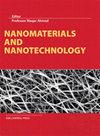金纳米络合二氧化硅探针-指间间隙电极表面电流-伏特法测定帕金森病
IF 3.3
3区 材料科学
Q2 MATERIALS SCIENCE, MULTIDISCIPLINARY
引用次数: 2
摘要
帕金森病(PD)是一种神经障碍,影响身体运动,导致平衡、行走和协调困难。一种新的传感器是必要的,以确定PD和监测治疗的进展。神经丝轻链(Neurofilament light chain, NfL)被认为是帕金森病的良好生物标志物,也有助于区分帕金森病和非典型帕金森综合征。免疫传感器是在二氧化硅表面的间隙指间指电极上进行电流-伏特测量,以测定NfL水平。为了提高检测能力,将抗nfl抗体与纳米金络合并固定在传感电极上。在从100 fM到1 nM的线性检测范围内,电流-伏特响应逐渐增加。检测限和灵敏度为100 fM,信噪比在n = 3时呈线性曲线(y = 0.081x + 1.593;r2 = 0.9983)。定量限制在1 pM时下降,并且通过区分其他神经再生疾病标记物证明了传感器的高性能,此外,即使在血清加标的样品中也可重复。这种检测系统的方法有助于测量NfL的水平,从而确定PD的病情。本文章由计算机程序翻译,如有差异,请以英文原文为准。
Gold-nanourchin complexed silicon dioxide-probe on gap-fingered interdigitated electrode surface for Parkinson’s Disease determination by current–volt measurement
Parkinson’s disease (PD) is a nervous disorder, affects physical movement, and leads to difficulty in balancing, walking, and coordination. A novel sensor is mandatory to determine PD and monitor the progress of the treatment. Neurofilament light chain (NfL) has been recognized as a good biomarker for PD and also helps to distinguish between PD and atypical PD syndromes. Immunosensor was generated by current–volt measurement on gap-fingered interdigitated electrode with silicon dioxide surface to determine NfL level. To enhance the detection, anti-NfL antibody was complexed with gold-nanourchin and immobilized on the sensing electrode. The current–volt response was gradually increased at the linear detection range from 100 fM to 1 nM. Limit of detection and sensitivity were 100 fM with the signal-to-noise ratio at n = 3 on a linear curve (y = 0.081x + 1.593; R 2 = 0.9983). Limit of quantification falls at 1 pM and high performance of the sensor was demonstrated by discriminating against other neurogenerative disease markers, in addition, it was reproducible even in serum-spiked samples. This method of detection system aids to measure the level of NfL and leads to determine the condition with PD.
求助全文
通过发布文献求助,成功后即可免费获取论文全文。
去求助
来源期刊

Nanomaterials and Nanotechnology
NANOSCIENCE & NANOTECHNOLOGY-MATERIALS SCIENCE, MULTIDISCIPLINARY
CiteScore
7.20
自引率
21.60%
发文量
13
审稿时长
15 weeks
期刊介绍:
Nanomaterials and Nanotechnology is a JCR ranked, peer-reviewed open access journal addressed to a cross-disciplinary readership including scientists, researchers and professionals in both academia and industry with an interest in nanoscience and nanotechnology. The scope comprises (but is not limited to) the fundamental aspects and applications of nanoscience and nanotechnology
 求助内容:
求助内容: 应助结果提醒方式:
应助结果提醒方式:


